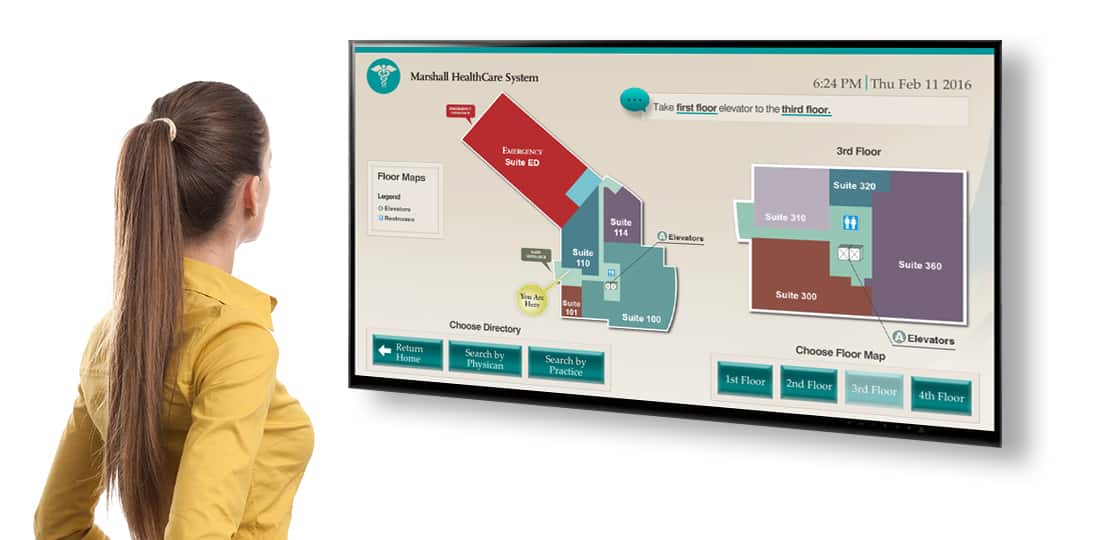
Visix To Showcase Voice-Based Interactive Wayfinding At Infocomm
May 28, 2019 by Dave Haynes
Atlanta-based CMS software company Visix is going to showcase new a new voice-activated wayfinding application in a couple of weeks at its InfoComm 2019 booth in Orlando.
“This is the next step in audience interaction,” says Jill Perardi, creative services manager for Visix. “People have embraced Voice User Interface technologies like Alexa, Siri and Google Assistant, and are eager for more. The primary advantage of VUI for our clients is that it gives their audiences a hands-free way to interact with screens. That can lead to more interest and engagement – which is the entire point of digital signage communications.”
Says a press release:
VUI will be showcased in the company’s booth in a wayfinding project for MIT. A voice-user interface uses speech recognition to understand spoken commands and questions, and visibly return maps and directories upon request. The design also includes traditional touchscreen wayfinding options and ADA controls.
Visix says it is using VUI to further improve the user experience by offering multi-modal interactions with screens showing any type of content. User-led interactions can increase engagement and eliminate steps in searching information, making the process more convenient and efficient for users.
VUI can also help meet ADA guidelines by providing interaction options for the visually impaired, and addresses the transmission of germs, which resonates with healthcare clients.
I’ll be interested in seeing this in action. Not a lot of digital signage companies have done much with voice, at least to date, though there are lots of people giving it next big thing status for this industry. I’m not sure about that, but definitely think there are applications where it can have a role.
The challenges are things like ambient noise in the environment (like a busy trade show floor), accents, fuzzy, inarticulate questions and so on. I assume the Visix coders used an API for Google Assistant for this, but don’t know for sure.
Bottom line, as always, is the interactive thing must make whatever’s being attempted faster, easier and generally better. If it is clunky and frustrating, users will revert to touch commands or just abandon the thing. We all know how much fun it is dealing with the supposedly mature technology of automated voice attendants for banks, airlines and cable companies.
Wayfinding might be relatively easy, because the list of questions at something like a college (Visix does a lot of higher ed) should be finite, like Economics school or bookstore.
I have so far only bumped into a small handful of competing companies, like the UK’s ScreenCloud, playing with voice.



Leave a comment